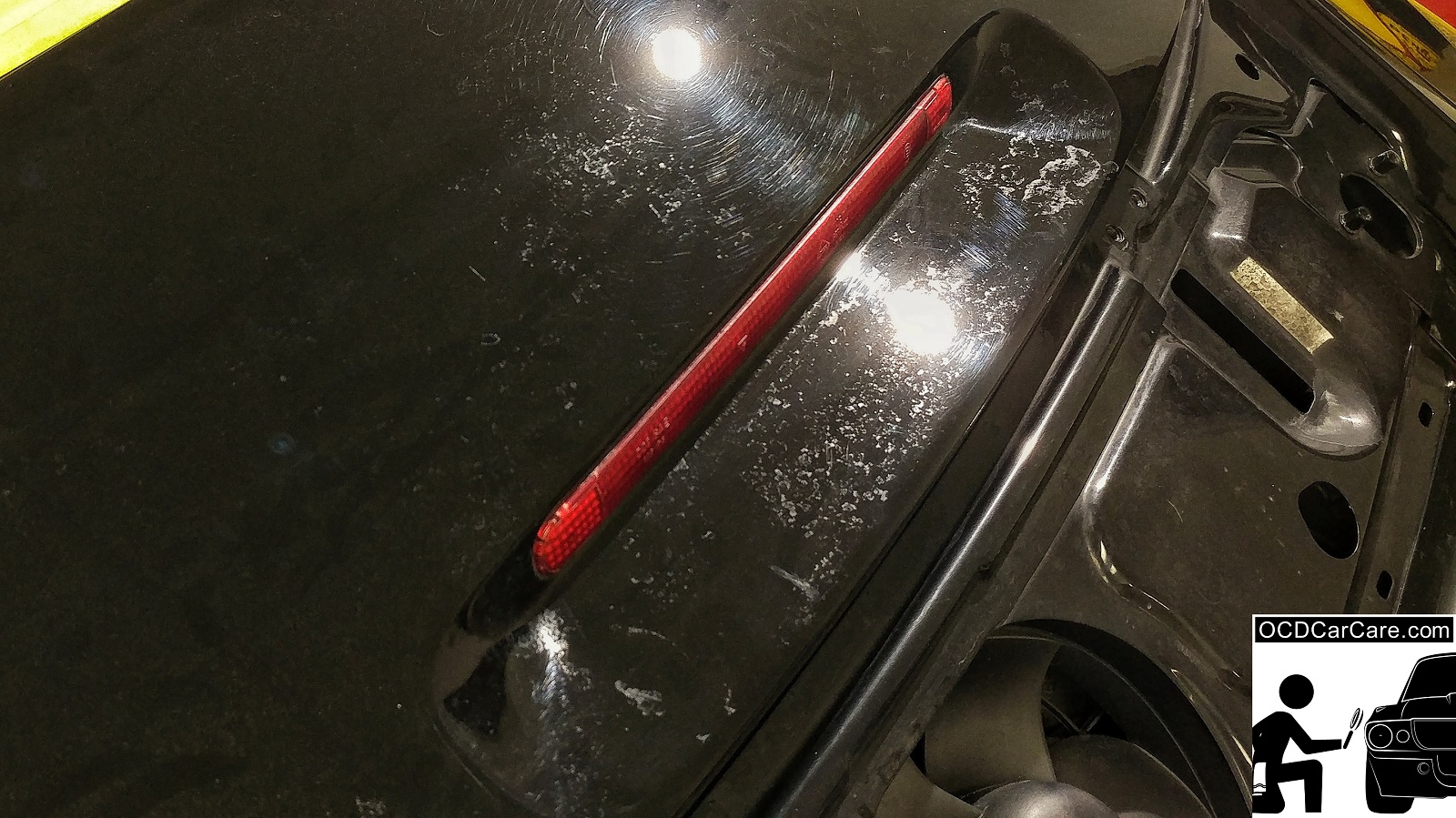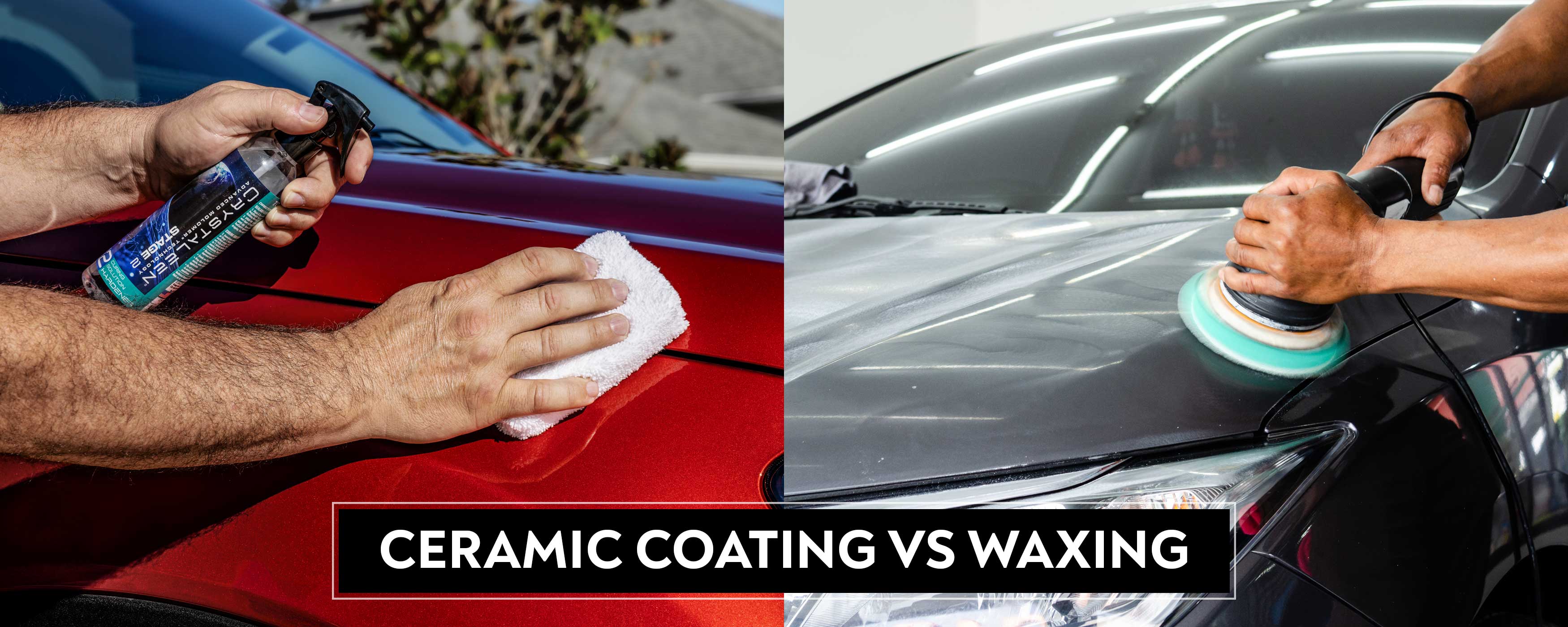Ceramic Finish vs. Typical Wax: Which Supplies Better Long-Term Security?
The argument between ceramic layers and standard wax for automobile protection has amassed considerable attention among automotive lovers and specialists alike. While both serve the objective of protecting paint, their differences in durability, application, and long-lasting maintenance costs might influence a customer's choice. Ceramic finishings flaunt exceptional long life and resistance to environmental aspects, yet the complexity of their application elevates inquiries about access and usefulness. As we discover these contrasting alternatives, it becomes necessary to consider not only the instant benefits however likewise the implications for vehicle treatment over time.
Overview of Ceramic Covering
Ceramic coating has gained substantial popularity among auto lovers and detailers alike because of its sophisticated safety qualities. This innovative innovation is made to create a long lasting, hydrophobic shield over a car's paint surface area, significantly enhancing its resistance to ecological pollutants such as dust, UV rays, and chemical discolorations. Unlike traditional wax, which supplies a temporary layer of security, ceramic finishes bond at a molecular degree with the paint, offering durable toughness-- typically expanding beyond two years with correct maintenance.
The application procedure involves careful prep work of the vehicle's surface area, including cleaning and polishing to guarantee optimal adhesion. When applied, the layer remedies to create a robust layer that not just includes deepness and gloss to the paint but additionally simplifies maintenance. With its hydrophobic residential or commercial properties, ceramic layer enables water and dust to move off even more quickly, reducing the frequency of laundries and reducing the threat of swirl marks.
Additionally, ceramic coverings are readily available in numerous solutions, permitting customers to pick products tailored to their particular needs and preferences. Overall, ceramic covering represents a significant development in paint protection technology, supplying premium efficiency compared to standard alternatives.
Introduction of Conventional Wax
Typically considered as a staple in automotive treatment, wax acts as a popular selection for those looking for a simple method to enhance and shield their automobile's paint - ceramic coating. Automotive wax normally comprises natural active ingredients, such as carnauba, or artificial compounds, made to develop a safety layer on the surface area of the paint. This layer not only enhances the lorry's gloss and shine but likewise supplies a barrier versus environmental contaminants
The application of wax is usually user-friendly, making it obtainable for both professionals and Do it yourself enthusiasts. As soon as applied, wax needs a healing period, after which it sets to form a protective shell.
Nonetheless, while wax is efficient for enhancing the aesthetic allure of an automobile, it is necessary to note that the defense it uses may demand much more constant reapplication compared to different products, such as ceramic coverings. Generally, conventional wax continues to be a popular option for those prioritizing ease of use and prompt aesthetic improvement.
Durability and Longevity Contrast
While both ceramic layers and typical wax offer protective benefits for auto paint, their sturdiness and long life vary substantially. Traditional wax, typically made from all-natural carnauba or artificial polymers, generally offers a safety layer that lasts approximately her comment is here 3 to six months. This fairly short lifespan demands routine reapplication to preserve optimum protection.
On the other hand, ceramic finishes are engineered from innovative nanotechnology, creating Going Here a covalent bond with the paint surface. This results in a durable, hydrophobic layer that can sustain for 2 to five years, depending upon the item and environmental problems. The remarkable resilience of ceramic finishings is associated to their chemical structure, which offers enhanced resistance to scrapes, UV rays, and oxidation.

Defense Against Environmental Variables
Protecting a lorry's paint from environmental elements is essential for maintaining its appearance and value over time. Autos are continuously revealed to a variety of elements, consisting of UV rays, bird droppings, tree sap, acid rain, and roadway gunk, all of which can compromise the stability of the paintwork.
Ceramic finishes supply a durable defense against these ecological assailants. Unlike traditional wax, which can break down rapidly under UV direct exposure, ceramic coverings form a sturdy, hydrophobic layer that resists the dangerous results of sunlight and ecological toxins. This advanced technology develops a chemical bond with the lorry's surface area, supplying remarkable defense that lasts for several years, even in extreme problems.
Typical wax, while easier to apply, usually calls for constant reapplication and uses minimal resistance to contaminants and UV rays. With time, it can damage down, leaving the paint prone to scratches and oxidation. On the other hand, ceramic coverings keep their safety high qualities much longer, substantially lowering the danger of paint damage and making sure that the automobile preserves its aesthetic appeal. Therefore, ceramic coatings are progressively recognized as the premium choice for long-lasting security against environmental factors.
Application and Upkeep Differences
The techniques of application and succeeding blog upkeep for ceramic coverings and typical wax vary dramatically, influencing the general customer experience and effectiveness of each item. Ceramic finishings require an even more elaborate application procedure, normally including surface area preparation that includes washing, sanitizing, and polishing the car. As soon as the surface area prepares, the ceramic finishing is applied in a regulated atmosphere, usually needing expert knowledge to make certain proper treating and bonding to the paint.

While both products enhance car appearance, the longer-lasting security used by ceramic coatings may validate their preliminary investment, in spite of the more demanding application process. On the other hand, typical wax continues to be a preferred selection for those looking for a less complex, albeit temporary, remedy.

Verdict
To conclude, ceramic coverings demonstrate significant advantages over conventional wax in terms of sturdiness and environmental management. With a life expectancy prolonging two to five years and superior resistance to UV rays, dust, and chemical discolorations, ceramic coatings offer a more reliable remedy for lasting lorry maintenance. Although the application procedure might need professional competence, the resulting expense savings and reduced regularity of reapplication emphasize the value of ceramic finishings for those seeking optimum automobile security.
The dispute in between ceramic finishes and standard wax for car defense has garnered substantial interest amongst vehicle enthusiasts and specialists alike. Unlike standard wax, which provides a short-lived layer of security, ceramic coatings bond at a molecular degree with the paint, providing durable sturdiness-- frequently expanding beyond 2 years with appropriate upkeep.
While both ceramic finishes and conventional wax offer safety benefits for auto paint, their sturdiness and longevity vary considerably. For car lovers seeking long-lasting defense, ceramic finishings present a compelling benefit over standard wax items.
In conclusion, ceramic coatings show considerable advantages over traditional wax in terms of durability and ecological defense.